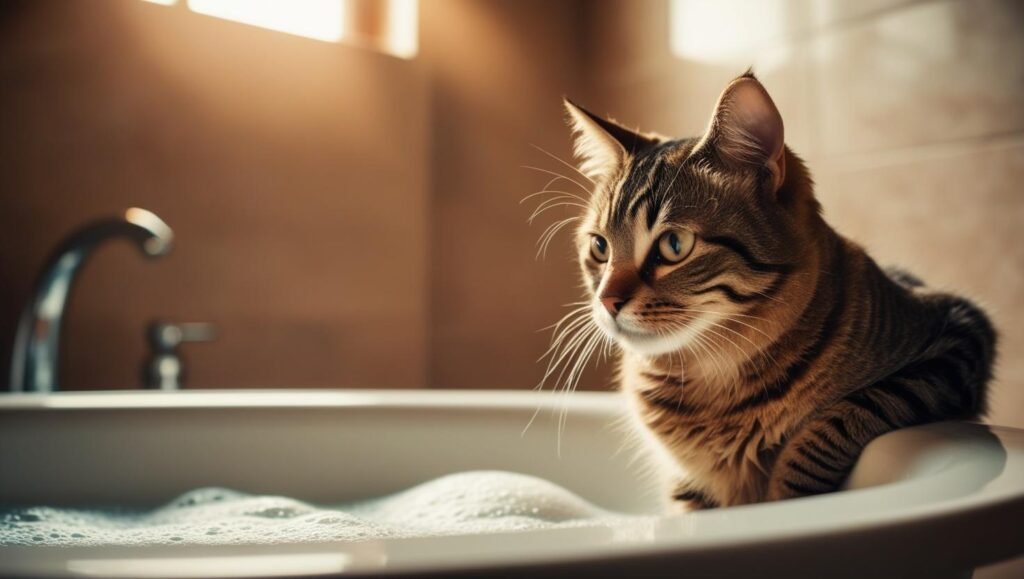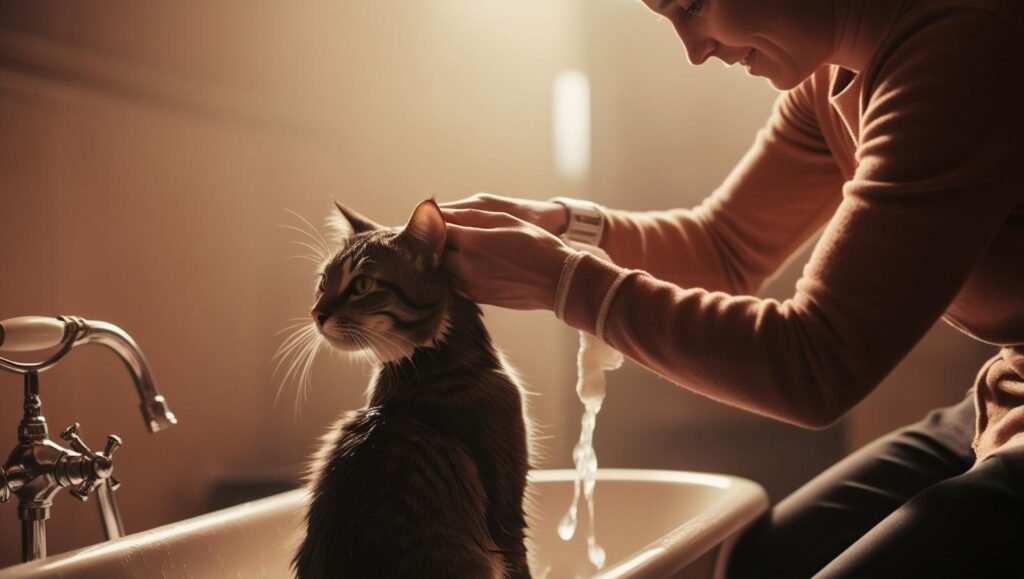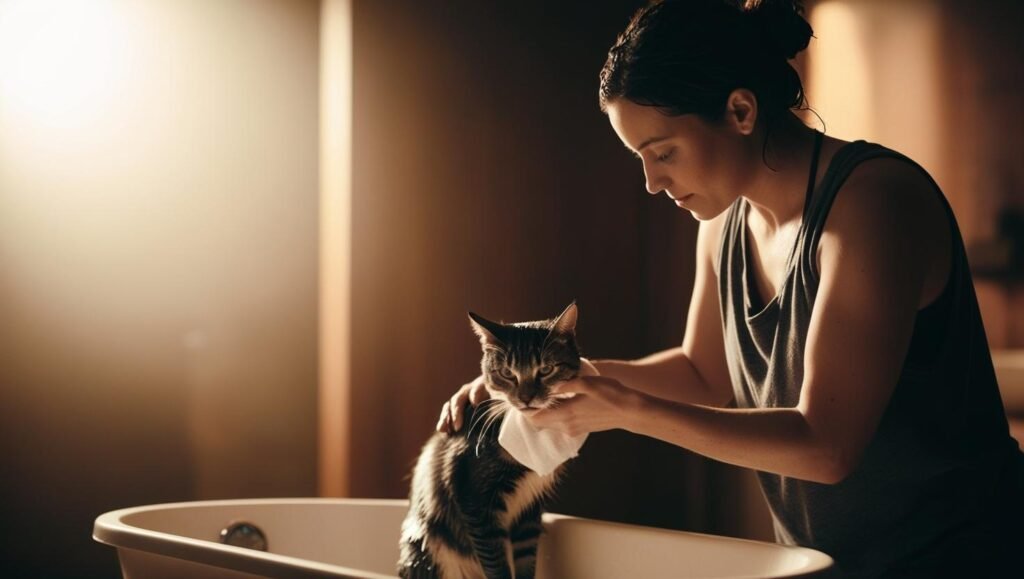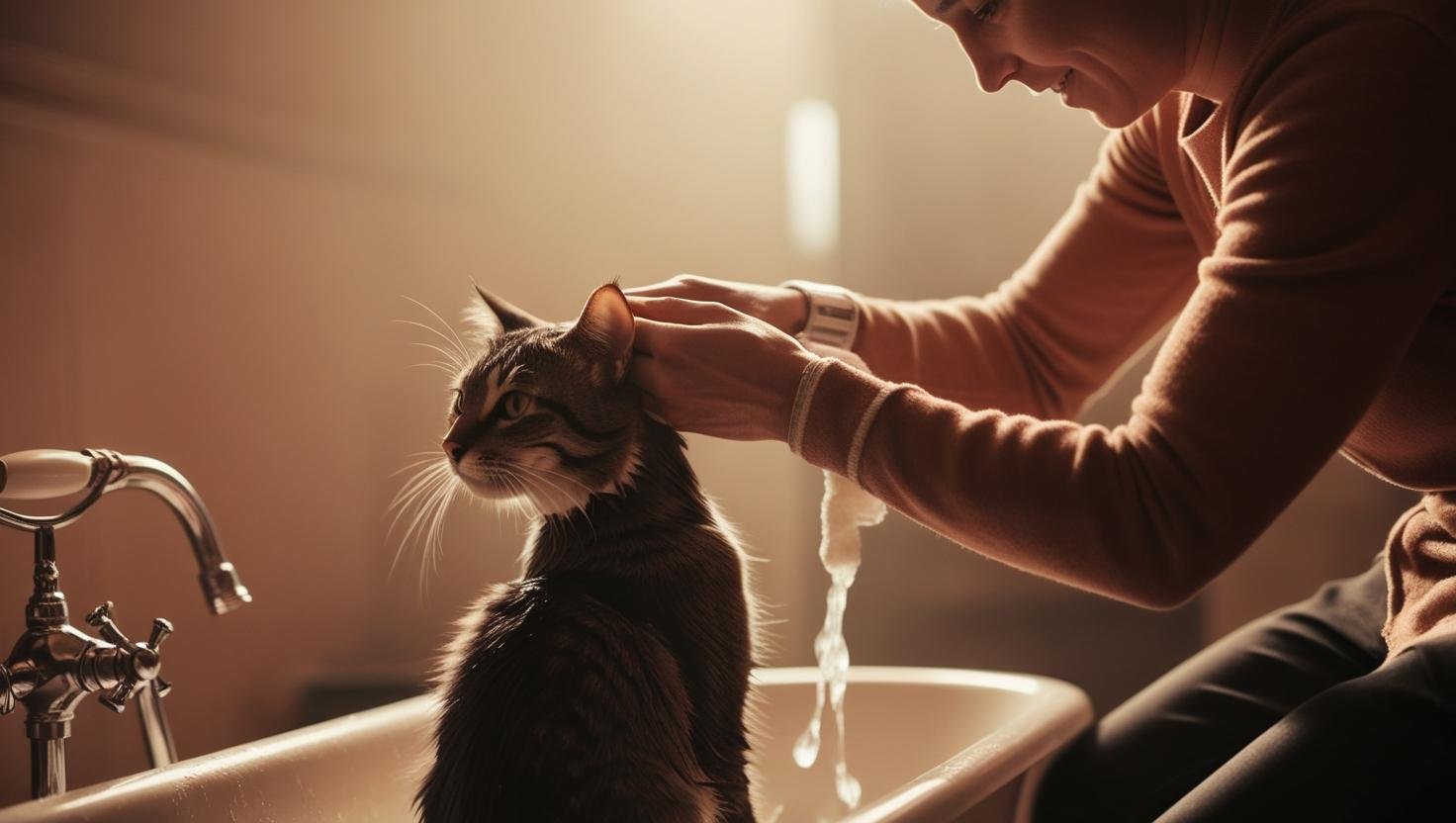In the wilderness, there exist numerous large felines that truly delight in being in the water. Tigers, panthers, and lions all enjoy swimming, most likely since their typical terrain is in a scorching climate and it assists in cooling them down.
However, do cats truly like water? It might not appear that way when your cat pursues a droplet from the sink tap. Yet, attempt to bathe your grown feline, and you’ll probably discover his genuine viewpoint.
So, how to bathe a cat safely? How can you tell when your feline requires assistance in the washing area? How can you clean them without causing a major struggle in the bathtub? Don’t worry! We’re going over all the essentials and more!
Do Cats Need to Be Bathed?
Credits: oyen
One explanation for why certain felines must be washed is that they are not always capable of cleaning themselves completely. This is particularly accurate for long-haired varieties that may acquire tangled fur over time.
A different issue is that waste can become trapped in the lengthy fur of the feline’s rear causing a mess that the cat simply cannot manage by himself. The outcome is a foul-smelling, unclean feline that requires a wash.
Even smooth-coated cats can sometimes make themselves filthy or oily, particularly if they are overweight and cannot access the areas that need cleansing. Additionally, elderly cats may reduce their grooming frequency or thoroughness compared to when they were younger.

Here are some more times when your cat may need a traditional bath.
Low vitality: If your feline is sluggish due to aging or health concerns, self-cleaning might not be at the top of their agenda.
Injury treatment: If your feline has sustained harm, your vet might advise washing as a part of injury care. In this scenario, it is crucial that you adhere to their guidelines precisely.
Dermal issues: Felines with sensitivities, parasites, fungal infections, or other skin ailments may require specialized or therapeutic washes for relief. Once more, adhering to your vet’s guidance is essential.
Get You and Your Cat Ready for Bath

“The initial step you must take is trimming your feline’s nails,” explains Susan Smith, a groomer from NYC with 25 years of expertise. “When your cat first encounters the water, she will likely attempt to spring out and latch onto anything within reach and you certainly don’t want that to be your limb.”
Giving your feline a thorough combing beforehand is also a wise move. Releasing as much loose fur as possible will simplify your task significantly. Particularly with a long-coated feline, you should incorporate consistent grooming into your routine to avoid tangles, which can become highly uncomfortable and might necessitate expert attention if they grow too severe.
What crucial supplies will you require for the wash itself? You should have on hand a few plush towels, a rugged metal comb for extracting grime (or waste), and a brush or comb for your feline’s coat post-bath. The water in the basin or tub should be mildly warm. “Ensure you check it with your forearm first,” advises Smith. You should purchase feline-friendly cleanser from your veterinarian or an animal care retailer.
But how to bathe a cat safely and make them feel at ease? Gradually familiarizing them with the washing process is a wise approach.
If your feline dislikes water, you’ll have a bit more preparation to handle before their first actual wash. It’s essential to keep in mind that this is not typical for your feline. In fact, they are naturally wired to resist what you are about to compel them to do. So, please remain patient and compassionate.
Credits: birdsbesafe
Throughout this procedure, remember that felines become defensive when they lack autonomy and authority over a circumstance. This is what ensures their survival in the wild.
They react negatively when pressured into entering a space or participating in an activity before ensuring its security. They feel endangered if they lack the option to retreat for self-preservation. Honoring this instinct will make washing sessions significantly smoother.
A Safe Process of Bathing

Below are all the steps to know how to bath a cat safely:
Step 1: Start with a big bowl or sink with a little water and drop in some toys to encourage splashing. Have treats handy to reward engagement. Then, fill the front of the bathtub with an inch or two of lukewarm water, leaving the back dry. Place a textured mat across both areas for stability.
Step 2: Use a toy or treat to lure them into the dry end of the tub instead of picking them up. Encourage them to investigate the water as before, rewarding them when they engage. If hesitant, encourage them to explore the dry area.
Step 3: Gradually get their fur wet, starting with a wet hand and sprinkling water on their legs or back. Over time, introduce a plastic cup for pouring. Rub your hands over their wet body to acclimate them to handling before applying shampoo.
Step 4: When they tolerate rinsing and pretend-shampooing, introduce a small amount of soap-free, hypoallergenic shampoo and rinse thoroughly. Dry them well with a towel, as a wet coat can be uncomfortable.
Step 5: If using an air dryer, slowly desensitize them with a low-heat, low-airflow setting, checking the temperature on your skin. End with their favorite treat or a fun play session for a positive experience!
How Often You Should Bathe a Cat
Credits: petbarnkw
If you own multiple felines, you’ve likely encountered unfamiliarity-driven hostility. You take one feline to the clinic. When they return, their companion feline becomes hostile. That’s because the feline that visited the clinic carries a different aroma. That’s how crucial a feline’s inherent scent is. They become unrecognizable if it shifts.
They rely on scent, even prior to vision, to identify ally from adversary. A wash, particularly one involving fragranced substances, can modify their scent. This not only causes tension between felines but also distresses the washed feline, who now suddenly smells unfamiliar.
Your feline’s fur is also rich in essential oils that are vital for their coat and skin. A wash strips those away.
So, how to bathe a cat safely while minimizing unnecessary washes? Save washes for occasions when they’re absolutely needed. However, it’s still an excellent idea to get your feline accustomed to water. They might come to appreciate it. And you’ll both be ready for that unavoidable moment when they roll in something undesirable.
